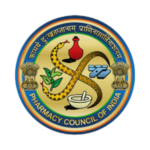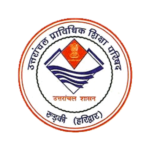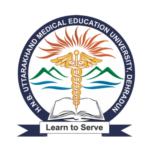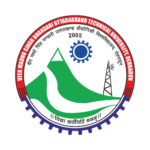Introduction
The rainy season is often welcomed with open arms as it brings a much-needed respite from the scorching summer heat. However, the monsoon also ushers in a host of health challenges, primarily due to increased exposure to water-borne and vector-borne diseases. Understanding the common diseases in rainy seasons and knowing how to prevent them is crucial for maintaining good health during this time. This comprehensive guide will delve into the most prevalent diseases in rainy seasons and provide practical prevention tips to help you stay healthy.

Understanding Water-borne and Vector-Borne Diseases
Water-borne diseases are caused by pathogenic microorganisms that are transmitted in contaminated water. These diseases in rainy seasons are typically contracted through ingestion of or contact with infected water.
Vector-borne diseases are infections transmitted by the bite of infected arthropod species, such as mosquitoes, ticks, and fleas. These vectors carry pathogens that can cause serious diseases in humans.

Common Water-borne Diseases in Rainy Seasons
-
Cholera
Cholera is a severe diarrheal illness caused by the bacterium Vibrio cholerae. It is usually spread through contaminated water or food.
- Symptoms: Sudden onset of severe diarrhea, vomiting, and dehydration.
- Prevention:
- Ensure safe drinking water by boiling or using water purifiers.
- Maintain proper sanitation and hygiene practices.
- Consume well-cooked food and avoid street food.
-
Typhoid Fever
Typhoid fever is caused by the bacterium Salmonella typhi. It spreads through contaminated water or food.
- Symptoms: High fever, headache, stomach pain, and constipation or diarrhea.
- Prevention:
- Drink purified or boiled water.
- Practice good hand hygiene, especially before eating.
- Get vaccinated if traveling to high-risk areas.
-
Hepatitis A
Hepatitis A is a viral liver disease spread through ingestion of contaminated food and water.
- Symptoms: Fever, fatigue, nausea, abdominal pain, and jaundice.
- Prevention:
- Drink safe and clean water.
- Maintain good personal hygiene.
- Get vaccinated against Hepatitis A.

-
Leptospirosis
Leptospirosis is caused by bacteria of the genus Leptospira, which are found in contaminated water.
- Symptoms: Fever, headache, muscle pain, and in severe cases, jaundice and kidney failure.
- Prevention:
- Avoid contact with contaminated water.
- Wear protective clothing and footwear in flooded areas.
- Maintain good sanitation practices.
Common Vector-Borne Diseases in Rainy Seasons
-
Dengue Fever
Dengue fever is a mosquito-borne viral infection caused by the Aedes mosquito.
- Symptoms: High fever, severe headache, pain behind the eyes, joint and muscle pain, rash, and mild bleeding.
- Prevention:
- Use mosquito repellents and wear protective clothing.
- Keep your surroundings clean and avoid water stagnation.
- Use mosquito nets and screens.

-
Malaria
Malaria is caused by Plasmodium parasites, transmitted by Anopheles mosquitoes.
- Symptoms: Fever, chills, headache, muscle pain, and in severe cases, anemia and jaundice.
- Prevention:
- Use insect repellents and mosquito nets.
- Take antimalarial medications if recommended.
- Eliminate mosquito breeding sites by avoiding stagnant water.
-
Chikungunya
Chikungunya is another mosquito-borne viral disease transmitted by Aedes mosquitoes.
- Symptoms: Sudden onset of fever, severe joint pain, muscle pain, headache, nausea, fatigue, and rash.
- Prevention:
- Use insect repellents and wear long-sleeved clothing.
- Ensure no water accumulation in and around your home.
- Use mosquito nets and screens.
-
Japanese Encephalitis
Japanese Encephalitis is a viral brain infection spread by Culex mosquitoes.
- Symptoms: High fever, headache, neck stiffness, disorientation, and seizures.
- Prevention:
- Get vaccinated if you live in or travel to high-risk areas.
- Use mosquito repellents and wear protective clothing.
- Ensure there are no mosquito breeding sites nearby.

Prevention Tips for Diseases in Rainy Seasons
Preventing diseases in rainy seasons involves a combination of good hygiene practices, proper sanitation, and measures to avoid mosquito bites. Here are some detailed prevention tips:
-
Maintain Good Hygiene and Sanitation
- Hand Washing: Regularly wash your hands with soap and water, especially before eating and after using the toilet.
- Clean Water: Drink only purified or boiled water. Avoid using untreated water for cooking or brushing your teeth.
- Food Safety: Eat freshly cooked food. Avoid raw or undercooked food, especially seafood. Wash fruits and vegetables thoroughly before consumption.
-
Use Protective Measures Against Mosquitoes
- Repellents: Apply mosquito repellent creams or sprays on exposed skin.
- Clothing: Wear long-sleeved shirts, long pants, and socks to minimize skin exposure.
- Nets and Screens: Use mosquito nets while sleeping and ensure windows and doors are fitted with screens to keep mosquitoes out.
-
Eliminate Mosquito Breeding Sites
- Stagnant Water: Ensure there is no stagnant water in and around your home. This includes flower pots, bird baths, and discarded containers.
- Regular Cleaning: Clean water tanks, coolers, and other water storage containers regularly.
- Drainage: Ensure proper drainage of water around your living area to prevent water accumulation.

-
Strengthen Your Immune System
- Healthy Diet: Eat a balanced diet rich in vitamins and minerals to boost your immunity. Include foods like fruits, vegetables, nuts, and seeds.
- Hydration: Drink plenty of fluids to stay hydrated and help your body fight infections.
- Exercise: Regular physical activity helps strengthen your immune system and overall health.
- Sleep: Ensure you get adequate sleep to help your body recover and fight off infections.
-
Seek Medical Attention Promptly
- Early Symptoms: If you experience symptoms like fever, headache, muscle pain, or gastrointestinal issues, seek medical attention immediately.
- Vaccinations: Stay up-to-date with vaccinations, especially if you are in or traveling to areas prone to specific diseases.
Conclusion
The rainy season is a time to enjoy the refreshing change in weather, but it also requires extra vigilance to protect against diseases in rainy seasons . By understanding the common water-borne and vector-borne diseases in rainy seasons and implementing preventive measures, you can safeguard your health and enjoy the monsoon to the fullest. Remember to maintain good hygiene, use protective measures against mosquitoes, eliminate breeding sites, strengthen your immune system, and seek medical attention promptly when needed.

Staying informed and proactive about these health risks will ensure that you and your loved ones remain healthy during the rainy season. For more health tips and information on diseases in rainy seasons, visit our blog regularly. Stay healthy and safe!








